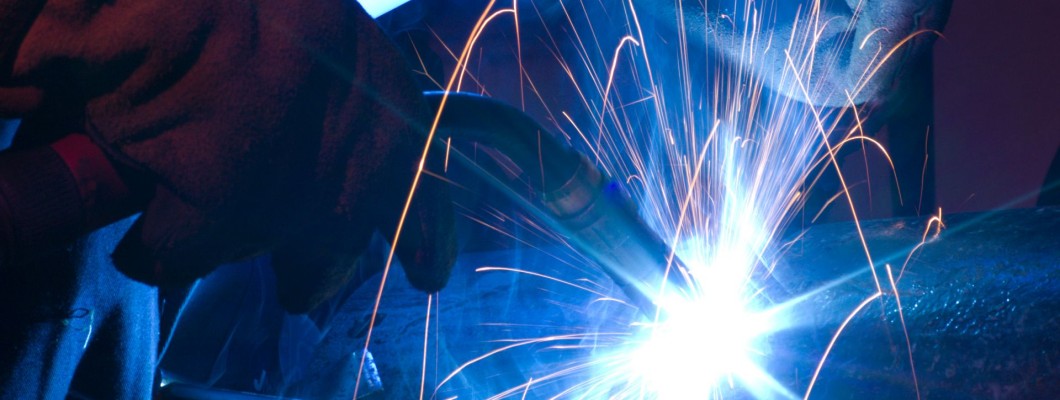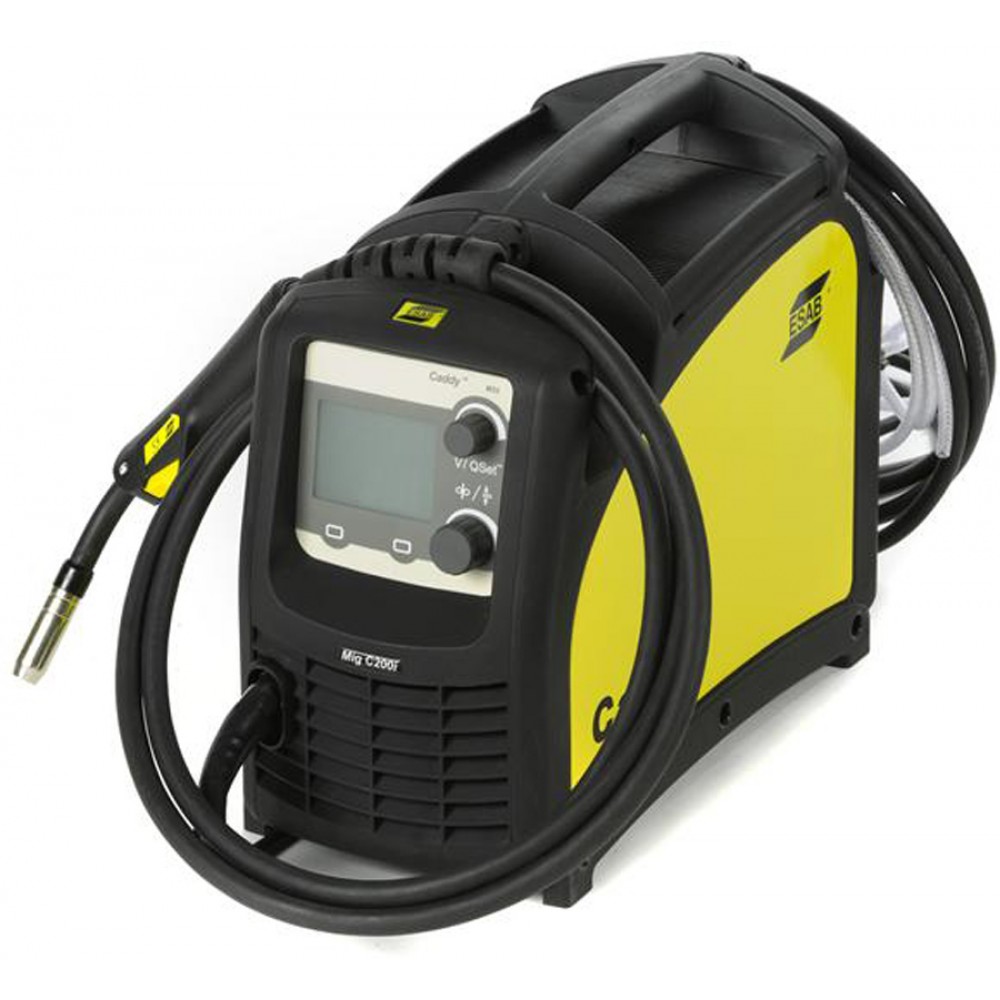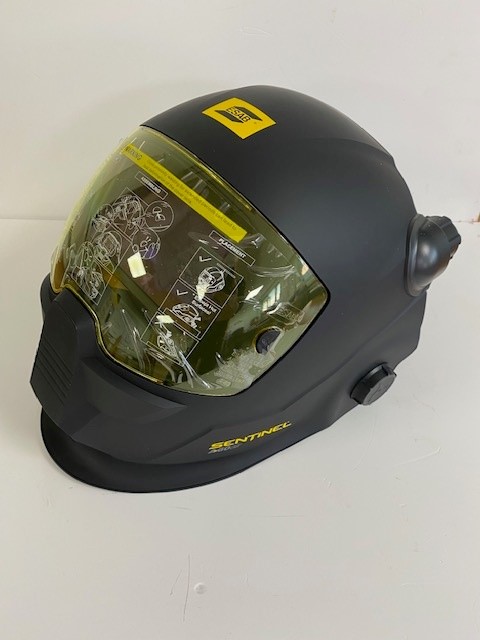
Have you struggled to achieve high-quality stainless steel welds in the workshop or out in the field? Heads up: we are unlocking the secrets of successful stainless steel welding; using the MIG (Metal Inert Gas) process. Whether you're a beginner or a hobby welder, these tips and techniques will help you master the art of stainless steel welding.
Stainless steel is known for its durability, corrosion resistance, and aesthetic appeal. However, it can be challenging to weld due to its unique properties. That's where the Metal Inert Gas welding process comes in. With modern MIG kit’s ability to provide excellent control of the weld pool and heat input, MIG welding is probably the go-to choice for welding stainless steel.
We’ll take a look at the key factors contributing to successful stainless steel welding with MIG. These factors include, selecting the right shielding gas, choosing the correct filler metal, and setting the appropriate welding parameters. We’ve also got a few practical tips and troubleshooting solutions to help you overcome the many challenges of this ubiquitous alloy.
Advantages Of MIG Welding With Stainless Steel
Stainless steel is used because of its durability. The addition of approximately 10% chromium to the iron gives it remarkable corrosion resistance and a stripped back aesthetic appeal. Those desirable properties are also what challenges the welder when pieces of the material has to be joined. MIG welding techniques and equipment are the most convenient way to weld in most situations. MIG welding, (Gas Metal Arc Welding (GMAW) in the States), is a popular choice for stainless steel welding because it offers several advantages.
One of the key advantages of MIG welding with stainless steel is the excellent weld control it allows for. Stainless can be a funny material to work with. It doesn’t conduct heat quite as well as mild steel, and thinner sections are more prone to warping. Modern MIG welding machines and torches allow for precise control over the heat going into the weld. This makes it easier to ensure that the stainless steel material is not overheated or distorted during welding.
Another advantage of MIG welding is the availability of a variety of shielding gases. The choice of shielding gas plays a crucial role in the quality and appearance of the weld. Argon-based shielding gases, such as pure argon or argon mixed with helium, are commonly used with stainless. These gases provide excellent protection against oxidation and help produce clean, spatter-free welds.
In addition to control and versatile shielding gas options, MIG welding with stainless steel offers high productivity. The process allows for fast travel speeds and provides good penetration, resulting in efficient and time-saving welding operations. This is especially beneficial for large-scale projects where time is of the essence.
Common Challenges in Stainless Steel MIG Welding
While MIG welding offers numerous advantages for stainless steel welding, there are also some common challenges that welders may encounter. Understanding these challenges and knowing how to overcome them is crucial for achieving successful welds.
One of the main challenges in stainless steel MIG welding is the risk of heat distortion. Stainless steel has relatively low thermal conductivity, so it retains heat significantly better than other metals. As a result, excessive heat input can cause distortion and warping of the material. To prevent this, it is important to carefully control the heat input and use proper welding techniques.
Another challenge is the formation of chromium carbide precipitation, commonly known as "sugaring." When stainless steel is heated, chromium and carbon can combine to form chromium carbides, which reduce the corrosion resistance of the material. To avoid sugaring, it is essential to use the correct filler metal and set the appropriate welding parameters.
Additionally, stainless steel is prone to weld contamination, particularly from oils, grease, and other contaminants on the surface.
Importance Of Preparing For Stainless Steel MIG Welding
Before welding the stainless steel starts, with MIG or any other process, proper preparation is crucial to ensure successful welds. Here are some key steps to follow:
- Material selection: Choose the appropriate grade of stainless steel for your application. The selection should consider factors such as corrosion resistance, strength requirements, and weldability. Common stainless steel grades that often need to be welded include 300 and 400 grade stainless. 304 for instance is used for surgical sinks and other facility furnishings while the 400 series are often found in car exhausts… not the most exciting of welding challenges.????
- Surface preparation: stainless steel is prone to weld contamination, particularly from oils, grease, and other surface contaminants. These contaminants can lead to poor weld quality and reduced corrosion resistance. Thorough cleaning of the surface of the steel is critical. Use a suitable cleaning method, such as wire brushing or solvent cleaning, to ensure a clean and weld-ready surface. If you decide to wire brush, make sure that it has stainless bristles so that you don’t simply contaminate the surface with corrosion inducing smears of non stainless steel.
- Make sure the work area is clean so that there is no steel dust that can be swept up into the welding pool to cause contamination. Even tiny ferrous particles can cause problems years later.
- Joint design and set up is crucial too. Consider the joint design based on the application and the thickness of the stainless steel material. Common joint designs for MIG welding include butt joints, lap joints, and T-joints. Ensure proper fit-up and alignment to facilitate smooth welding.
- Fixturing and clamping: Use appropriate fixtures or clamps to secure the stainless steel parts in the desired position during welding. This helps maintain proper alignment and prevents distortion during the welding process.
- Tack welding also helps to maintain alignment and helps to reduce, still further, the risks of warping.
By following these preparation steps, you can set yourself up for success in stainless steel MIG welding.
Choosing The Right Equipment For Stainless Steel MIG Welding
Successful stainless steel welds with MIG, require sound equipment choice. Here are the key components you'll need:
- MIG welding machine: Invest in a high-quality MIG welding machine that is capable of handling stainless steel welding. Look for a machine that offers adjustable voltage and wire feed speed settings to provide precise control over the welding process.
- It’s also an idea to use a slightly heavier duty torch than you might normally think, due to the amount of heat that can be generated in welding stainless. Stainless often needs higher current settings than mild steel and a chunkier torch will be better able to handle the extra power.
- Shielding gas: Choose the appropriate shielding gas for stainless steel welding. As mentioned earlier, argon-based gases (link) are commonly used for MIG welding stainless steel. Pure argon or a mixture of argon and helium can provide the necessary protection against oxidation and help produce clean welds.
- Wire electrode: Select the correct wire electrode for stainless steel MIG welding. Stainless steel welding wires are available in various grades, such as ER308, ER316, and ER309. The choice of wire depends on the specific stainless steel grade being welded and the desired properties of the weld. It’s also recommended that you fit a Teflon wire liner to ensure good smooth wire feed.
- Consumables and accessories: Ensure you have all the necessary consumables and accessories, such as contact tips, nozzles, and liners, to keep your MIG welding equipment in optimal condition. Regularly inspect and replace worn-out or damaged parts to maintain consistent weld quality.
By investing in reliable equipment and using the appropriate consumables, you can set yourself up for success in stainless steel MIG welding.
Setting Up The MIG Welding Machine For Stainless Steel
Proper setup of the MIG welding machine is crucial for achieving successful stainless steel welds. Here are the key steps to follow:
- Wire selection: Choose the appropriate wire electrode for stainless steel welding. Consider the stainless steel grade, thickness, and desired weld properties when selecting the wire. Consult the manufacturer's recommendations or seek professional advice if needed.
- Gas selection: Use the correct shielding gas for stainless steel MIG welding. Argon-based gases, such as pure argon or argon mixed with helium, are commonly used. Ensure the gas flow rate is set according to the manufacturer's guidelines to provide adequate protection. MIG tends to use quite a high flow rate, so do check before you start.
- Wire feed speed and voltage: Set the wire feed speed and voltage based on the stainless steel thickness and joint design. Consult the welding parameter chart provided by the wire manufacturer or refer to welding standards for guidance. If you are new to stainless steel, then it’s good practise to carry out a few test welds to fine-tune your settings.
- Electrode stick-out: Maintain the proper electrode stick-out, which is the distance between the contact tip and the workpiece. The stick-out should be consistent and within the recommended range to ensure stable arc performance and proper weld penetration.
- Welding technique: Choose the appropriate welding technique based on the joint design and welding position. Common techniques for stainless steel MIG welding include the push technique (for flat and horizontal positions) and the drag technique (for vertical and overhead positions). Practice the chosen technique to develop control and consistency in your welds.
By carefully setting up the MIG welding machine and adjusting the parameters according to the stainless steel requirements, you can achieve high-quality and aesthetically pleasing welds.
Techniques For Successful Stainless Steel MIG Welding
To achieve successful stainless steel welds with MIG, it is essential to apply the right techniques. Here are some key techniques to consider:
- Maintain a consistent travel speed: Keep a steady and consistent travel speed during welding to ensure even heat distribution and proper fusion. Rapid or slow travel speeds can lead to inconsistent welds, lack of fusion, or excessive heat input, resulting in poor weld quality.
- Control the heat input: Stainless steel is sensitive to heat, so it is crucial to control the heat input during welding. Avoid excessive heat input, as it can lead to distortion, warping, or sugaring. Monitor the welding parameters, such as voltage and wire feed speed, and make adjustments as needed to maintain the desired heat input.
- Use the correct angle and gun position: Hold the MIG torch at the correct angle to achieve proper penetration and ensure good fusion. The angle should be approximately 5-15 degrees from the vertical or horizontal, depending on the welding position. Maintain a consistent gun travel angle throughout the weld to prevent uneven bead shape or undercutting.
- Minimize the arc length: Keep the arc length as short as possible without touching the workpiece. A shorter arc length allows for better control and reduces the risk of porosity or lack of fusion. Maintain a consistent arc length by adjusting the electrode stick-out and controlling the travel speed.
- Practice proper weld bead placement: Pay attention to the placement of the weld bead to achieve desired weld aesthetics and strength. Ensure proper sidewall fusion by overlapping the weld bead slightly onto the base metal. Avoid excessive build-up or undercutting, as these can weaken the weld.
By applying these techniques and practicing regularly, you can improve your stainless steel MIG welding skills and achieve consistent and high-quality welds.
Troubleshooting Common Issues in Stainless Steel MIG Welding
Even with proper techniques and setup, welding issues can still arise. Here are some common problems in stainless steel MIG welding and their potential solutions:
- Porosity: Porosity is the presence of small gas pockets or voids in the weld. It can be caused by factors such as inadequate shielding gas coverage, contaminated base metal, or excessive moisture in the shielding gas. Ensure proper gas coverage, clean the base metal thoroughly, and check the gas supply for moisture.
- Lack of fusion: Lack of fusion occurs when the weld fails to fully fuse with the base metal. It can be caused by factors such as poor welding technique, inadequate heat input, or insufficient penetration. Ensure proper technique, adjust heat input if needed, and ensure proper joint fit-up and alignment.
- Cracking: Cracking can occur in the weld or the heat-affected zone (HAZ) due to factors such as high residual stresses, inadequate preheating, or improper filler metal selection. Follow proper preheating procedures, choose the appropriate filler metal for the stainless steel grade, and control the cooling rate to minimize cracking.
- Excessive spatter: Excessive spatter refers to the unwanted splattering of molten metal during welding. It can be caused by factors such as improper wire feed speed, incorrect shielding gas flow rate, or contaminated wire. Adjust the wire feed speed, check the gas flow rate, and ensure the wire is clean and free from contaminants.
By troubleshooting these common issues and addressing the underlying causes, you can overcome welding challenges and achieve successful stainless steel welds.
Safety Precautions For Stainless Steel MIG Welding
Safety should always be a top priority when engaging in any welding process, including stainless steel MIG welding. Here are some important safety precautions to follow:
- Protective clothing and gear: Wear appropriate personal protective equipment (PPE) such as a welding helmet, flame-resistant clothing, gloves, and safety glasses. Ensure that the PPE is in good condition and provides adequate protection against sparks, UV radiation, and potential hazards.
- Ventilation: The presence of Chromium in the alloy and potential traces of Cadmium will generate some very toxic fume and dust. Stainless steel MIG welding needs a well-ventilated area or local exhaust ventilation to remove welding fumes and gases. Welding fumes can contain toxic substances, so it is important to minimize exposure and maintain good air quality. An air fed welding mask is strongly recommended, even when the previous precautions are possible.
- Fire prevention: Take necessary precautions to prevent fires during welding operations. Keep a fire extinguisher nearby, remove flammable materials from the welding area, and use fire-resistant barriers or blankets to protect surrounding surfaces.
- Electrical safety: Ensure that the MIG welding machine is properly earthed and that all electrical connections are secure. Avoid contact with live electrical components and use insulated tools when working on the equipment.
- Training and supervision: Get trained and certified for stainless steel MIG welding techniques. If you are in a larger workshop, get guidance from the experienced welders or supervisors. This is especially valuable as you move on to complex projects or different grades of stainless.
By following these safety precautions, you can minimize the risks associated with stainless steel MIG welding and create a safe working environment.
Best Practices For Post-Welding Stainless Steel Care
After completing the stainless steel MIG welding process, it is important to follow best practices for post-welding care. Here are some key steps to consider:
- Remove spatter: Clean the weld area by removing any slag or spatter using stainless steel wire brushes, grinding discs or appropriate cleaning tools. This helps improve the appearance and corrosion resistance of the weld.
- Passivation: Passivation is a process that removes impurities and enhances the corrosion resistance of stainless steel. After welding, consider passivating the welded area using a suitable chemical solution or a mechanical process to restore the stainless steel's protective chromium oxide layer.
- Inspect and test: Inspect the completed weld for any defects or imperfections. Perform non-destructive testing methods, such as visual inspection or dye penetrant testing, to ensure the weld quality meets the required standards.
- Protective coatings: Apply protective coatings, such as paint or powder coating, to the welded stainless steel surfaces if necessary. These coatings provide an additional layer of protection against corrosion and enhance the aesthetics of the weld.
- Regular maintenance: Incorporate regular maintenance practices to ensure the longevity of the stainless steel welds. This may include periodic inspections, cleaning, and re-passivation, as well as addressing any signs of corrosion or damage promptly.
By following these best practices for post-welding care, you can ensure the long-term performance and durability of your stainless steel welds.
MIG: The Stainless Conclusion
Mastering the art of stainless steel welding with MIG is a valuable skill that can open up a world of possibilities. By understanding the advantages and challenges of MIG welding with stainless steel, preparing properly, choosing the right equipment, and applying the correct techniques, you can achieve successful welds that meet the highest standards.
Remember to troubleshoot common issues, prioritize safety at all times, and follow best practices for post-welding care to ensure the longevity and quality of your stainless steel welds.
So, whether you're working on small-scale projects or large-scale industrial applications, unlock the secrets of successful stainless steel welding with MIG and unleash your welding potential. Happy welding!



Leave a Comment